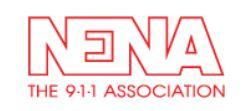As I prepare for the upcoming NENA 2019 Conference and Expo, where I will be presenting on a panel titled “A Quantum Leap for 9-1-1: The Vertical Plane & Handset-Derived Location,” I am amazed at how far our industry has come in remedying the lag in public safety location accuracy. The challenge of finding wireless 9-1-1 callers, both indoors and vertically, is now being met with a variety of new location technologies that, when incorporated into Computer-aided Dispatch (CAD) systems and other situational awareness applications, will provide better routing, a quicker fix on caller location, and faster delivery of information to field responders. As Polaris Wireless’ CEO Manlio Allegra pointed out in an article he co-authored, “Falling Behind the Curve: The Lag in Public Safety Location Accuracy and How to Fix It,” the National Emergency Number Association (NENA) stated that 2018 was a ‘watershed moment for public safety communications’ with a drumbeat of positive developments constituting a ‘revolution in public safety technology and communications.’
From Polaris Wireless’ perspective, developing this new 3D location technology and working with public safety agencies to implement it, I agree that it feels like a revolution is continuing, driven by a number of factors:
- The establishment of a vertical accuracy, or Z-axis, location metric. With a high-accuracy vertical location capability, emergency callers’ locations can be identified down to the floor level, a vital requirement for any multi-story building response, but particularly for big city first responders dealing with high-rise building emergencies. Agencies can now dispatch police, fire and EMS with higher confidence that the caller will be found, via his wireless device, and be helped in an efficient and timely manner.
- PSAPs’ desire to keep up with the rapid evolution in location technology. Over 80 percent of emergency calls to Public Safety Answering Points (PSAPs) come from a mobile device, many of which originate indoors. Just because that device’s location can be identified with high accuracy doesn’t mean that the CAD Systems can accurately display and dispatch that location. PSAPs are investing millions in NG911 upgrades to ensure that they can utilize the rich location data being provided to them.
- Recognition of 9-1-1 Professionals. While not a pure technology matter but important to the public safety community, U.S. Rep Norma Torres (D-CA) introduced the 911 SAVES Act earlier this year. This Act seeks to reclassify Public Safety Telecommunicators as Protective Service Occupations. Anyone who has called 911 should immediately recognize that professionals answering their calls provide services well beyond dispatch, have significant training and are subject themselves to a wide variety of traumatic experiences. We applaud this Act as part of the improvements and recognition within the public safety community.
I will be sharing more details about vertical location technologies at the NENA Conference where I will be speaking on June 18, at 3pm ET, at the Gaylord Palms Resort, Orlando, Florida. I hope to see you there!



